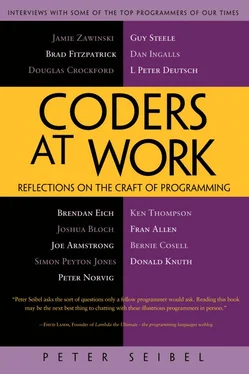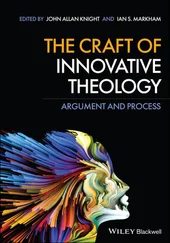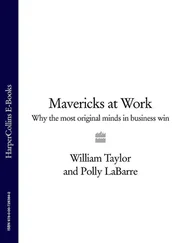Peter Seibel - Coders at Work - Reflections on the craft of programming
Здесь есть возможность читать онлайн «Peter Seibel - Coders at Work - Reflections on the craft of programming» весь текст электронной книги совершенно бесплатно (целиком полную версию без сокращений). В некоторых случаях можно слушать аудио, скачать через торрент в формате fb2 и присутствует краткое содержание. Жанр: Программирование, на английском языке. Описание произведения, (предисловие) а так же отзывы посетителей доступны на портале библиотеки ЛибКат.
- Название:Coders at Work: Reflections on the craft of programming
- Автор:
- Жанр:
- Год:неизвестен
- ISBN:нет данных
- Рейтинг книги:3 / 5. Голосов: 1
-
Избранное:Добавить в избранное
- Отзывы:
-
Ваша оценка:
- 60
- 1
- 2
- 3
- 4
- 5
Coders at Work: Reflections on the craft of programming: краткое содержание, описание и аннотация
Предлагаем к чтению аннотацию, описание, краткое содержание или предисловие (зависит от того, что написал сам автор книги «Coders at Work: Reflections on the craft of programming»). Если вы не нашли необходимую информацию о книге — напишите в комментариях, мы постараемся отыскать её.
Coders at Work
Founders at Work
Coders at Work: Reflections on the craft of programming — читать онлайн бесплатно полную книгу (весь текст) целиком
Ниже представлен текст книги, разбитый по страницам. Система сохранения места последней прочитанной страницы, позволяет с удобством читать онлайн бесплатно книгу «Coders at Work: Reflections on the craft of programming», без необходимости каждый раз заново искать на чём Вы остановились. Поставьте закладку, и сможете в любой момент перейти на страницу, на которой закончили чтение.
Интервал:
Закладка:
But it wasn’t permanent. People finally realized “Oh, wait a minute, Java has all these great strengths and we’re using it for this and that but we were on to other good things with dynamic programming languages and it’s time to get back to that.” But that’s an example that’s easy for me to see because I’m involved in it.
In a much bigger sense I hate to see computer-science departments that feel their role is to prepare people to work in an industry and the industry is going that way and therefore we have to teach our students that way. It’s exactly the wrong thing to do. What you should be doing with your students is teaching them to think generally—think outside the box and plot the other courses we should be pursuing.
It’s not a simple problem because there is great value to having that whole standard out there. Having thousands of programmers who have worked on thousands of routines and they’re very solid—you can get your work done that way.
It’s a little bit the difference between computer science in the service of production and computer science in the service of moving the intellectual content forward. I’ve been having fun with the Lively Kernel, which is, in a way, trivial. There’s nothing new about it—I’m using all stuff that was there before. It’s built on JavaScript and the graphics you can get in a browser. But it’s been really fun because it’s another kernel like Squeak. Because JavaScript is all there in the browser and the graphics is all there in the browser, the work on the kernel is very tiny. It’s just, how do you bring the graphics to life and how do you build up a little computing environment.
Whenever you do something like that, small enough, then anybody can understand it. If you take a few things out of the equation, like the language and the graphics, then the question is, what is the kernel? And I think that’s an interesting question.
I’m hoping that this—not particularly my stuff—but this kind of investigation might reinspire computer science to do some studies about how do you make a kernel, what other kernels could we build that are even simpler, even more uniform.
It’s like what math did. Math found by symbolizing things that you could simplify a lot of stuff. Then, because of that, you could start to think about bigger constructs. That’s my hope.
Seibel:When you say a kernel, you’re talking about a programming kernel. What’s the core of the Lively Kernel?
Ingalls:What I mean by a kernel, typically, is you put together enough stuff that it can, in some sense, build itself or build other useful things. Squeak is one that really can build itself. The Lively Kernel presumes the existence of JavaScript and some graphics, but it ends up with the ability to edit the graphics so that you can make new graphical things and to edit the programs so you can make new programs. So it’s enough to build all the applications that you might want to build in a browser.
I think in playing this game you get to hide layers that you want to. The question is, where is your playing field. In Squeak the whole language is part of the kernel so it’s got its own compiler and byte-code interpreter. And it’s got its whole graphics system—it’s got BitBlt and all the stuff around that.
It looks like those are an important part of any kernel but you can take them out. You can say, “Let’s assume that we have a dynamic language; let’s assume that we have graphics.” In my old thinking, I would have thought, “Well, there is nothing else.” But it’s not true. What’s left is, how do you put the graphics together to make an interesting user interface environment? And how do you bring programs and scripts up to the level that you can change them?
I was forced, by trying to come up with something that would run without installation, in a browser, to take what was in the browser. What’s in the browser? Well, we’ve got JavaScript and we’ve got a graphics environment. It was a chance to step back from all this and say, “Well, yes there are language kernels, there are graphics kernels, and then there’s this other kind of self-supporting user-interface environment kernel.”
Seibel:In both Lively Kernel and Squeak, from the little that I’ve played with them, part of that kernel that’s not the language or the graphics is this notion of a UI that’s always programmable—it’s got these little handles and so forth that you can do programmatic things with.
Ingalls:Right.
Seibel:I found that pretty confusing. Am I programming? Am I using this application? Sometimes I wished there were a bit more of a distinction.
Ingalls:Yup. This is another of those double-edged swords. I don’t think there’s a simple answer. At the very bottom, it’s a wonderful thing that we’ve built computers that totally allow for change. It’s all random-access memory; it’s all programmable. To me it’s important to keep that liveliness, that malleability, that changeability. If you have a system that’s dynamic and changeable, it’s much easier to then draw boundaries and say, “You can’t change stuff inside of here” than it is to start out with something that’s not dynamic and changeable and then try to make it that way.
If you look at web programming right now, it started out with this textmarkup language and then JavaScript came into the picture to try and make it dynamic. It would have been so much easier to start out with something that was like the dynamic graphics everyone knew about in those days and then make stuff fixed and printable when you needed to.
Seibel:Well, easier for everybody except someone who just wanted to put some text on the Web.
Ingalls:I suppose that’s true. But it’s easier for someone to put a layer, like HTML, on top of that. I think it’s better to have the underlying systems be as dynamic as possible. Then you can put on syntax or type restrictions, or this, that, and the other that make it into a fixed thing. Absolutely there are situations when people are just using a system—you want things to be fixed that don’t need to be flexible. And yes it does seem that if people perceive that it’s flexible, it’s scary to them. If you take the Lively Kernel as it is right now, it’s not at all something that an end user would want. Nobody wants to suddenly see their window tilted at 20 degrees.
Seibel:Or to inspect the code of the button they’re trying to press.
Ingalls:Right, right. Really it’s a demo to try to inspire people who want to go that direction. It’s also very simple so somebody could put in a layer that would make it usable and not changeable in those various weird ways. But yeah, there’s a real trade-off between having things be flexible and general and having things be codified and able to be used as a cookbook and always do what you expect.
Seibel:Do you really think the current Lively Kernel, or some near-term evolution of it, will become a way people are going to build apps, or is this really a thought experiment out of Sun Labs to show people a way of thinking?
Ingalls:Well, it’s definitely a thought experiment. It offers a couple of sweet spots that might actually survive as real products in some sense. It’s got the ability to very quickly do something like, if you wanted to make a red heart and put a message in it and make it throb, and then store that as a web page, you can do all that from within it, never having installed any software. So you get the Lively Kernel and you build this little dynamic thing with a little bit of scripting in it and it’s got the WebDAV protocol to go out and create and store a new web page.
Читать дальшеИнтервал:
Закладка:
Похожие книги на «Coders at Work: Reflections on the craft of programming»
Представляем Вашему вниманию похожие книги на «Coders at Work: Reflections on the craft of programming» списком для выбора. Мы отобрали схожую по названию и смыслу литературу в надежде предоставить читателям больше вариантов отыскать новые, интересные, ещё непрочитанные произведения.
Обсуждение, отзывы о книге «Coders at Work: Reflections on the craft of programming» и просто собственные мнения читателей. Оставьте ваши комментарии, напишите, что Вы думаете о произведении, его смысле или главных героях. Укажите что конкретно понравилось, а что нет, и почему Вы так считаете.












